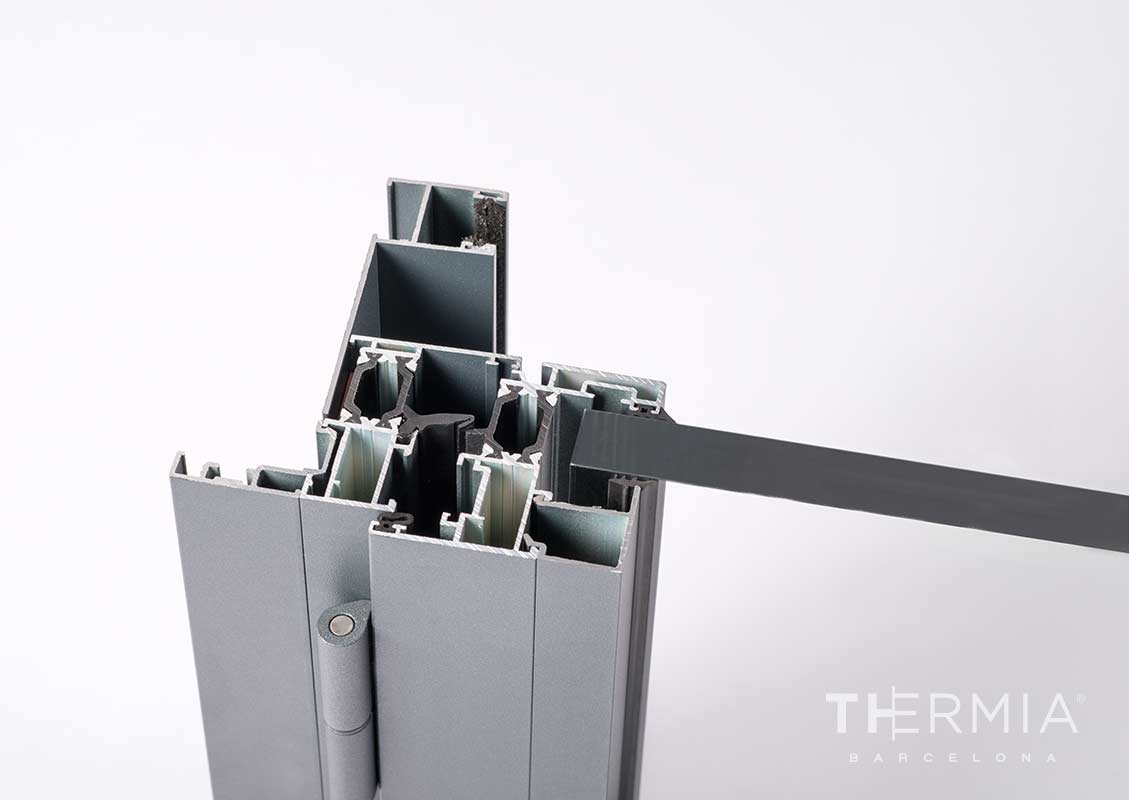Source: mejordealuminio.com

Aluminium windows provide perfect insulation
Thermal insulation: let’s be clear. Falsehoods surrounding “the warmth of PVC and cold of aluminium”
Thermal insulation is the ability of a construction element to insulate from the outside. In the case of a window the term “thermal transmittance” is used, which includes (and this is highly important) the frame + glass. Not only the frame!
Thinking that PVC is warmer to the touch and aluminium is colder and, therefore, you will be insulated better by plastic, is false. Maybe it is warmer to the touch (it is plastic) but the window as a whole will have a thermal transmittance value which MUST include the glass and have the same values as an aluminium frame. It is the assembly as a whole and its values, and not only the frame and the material that we must consider for energy savings.
No confusion please.
The consumer is often misled when talking about the thermal transmittance of the whole window, but referring actually only to the thermal transmittance of the frame profile. It is portrayed as if it were much more decisive than it actually is, and the arguments and the influence that it has are manipulated in the following manner:


A window comprises a frame and glass. The glass is 80% of the whole window. When analysing the transmittance values, the assembly as a whole must be analysed, including the glass, since this is the true value. Analysing only the profile will bring up erroneous values. Nobody fits a glassless window.
Such a simple fact is constantly manipulated by PVC window manufacturers, since they only compare the transmittance of the frame and not the unit as a whole. With arguments that PVC is warmer and aluminium is colder that are merely comparisons between plastic and metal, advertisers make us believe that the window will have an alleged total saving thanks to the material with which the frame has been manufactured.
So why don’t they calculate the whole assembly? Easy. Because when adding the glass, which makes up 80% of the window, the alleged saving due to transmittance only represents 20% when the frames are changed.
It is in this 20% where the materials must be compared.
When this false advantage disappears, there are other factors to discuss such as quality, durability, resistance, aesthetics, security, recycling, sustainability, etc., where plastic always comes off worse.
Conclusion
If you analyse a window’s thermal insulation considering the whole installation (frame and glass), fitting aluminium with a thermal break and suitable glass can result in figures that are practically the same as other materials. This tells us that energy savings from fitting windows using one material or another is insignificant, almost non-existent.
Therefore, values such as the quality, durability, resistance, aesthetics, security, recycling and sustainability of aluminium can convince when purchasing one material or another.


Advantages of acoustic insulation in aluminium windows
Aluminium windows achieve acoustic insulation that is practically the same as windows made from other materials but they have advantages: the performance of aluminium does not change as the years go by, it will not be deformed or altered and it will not require maintenance.

 Contact
Contact